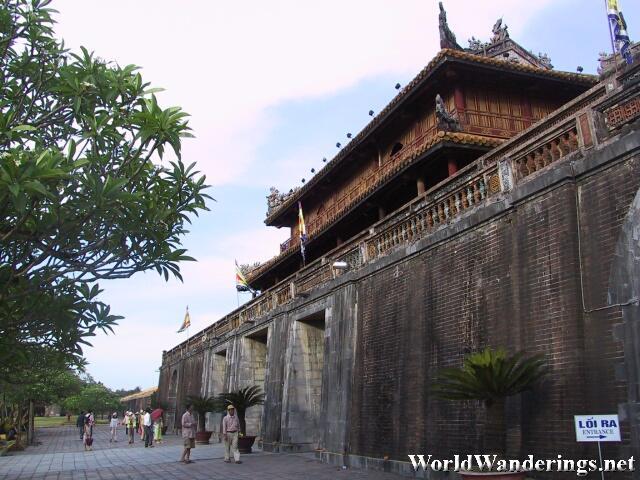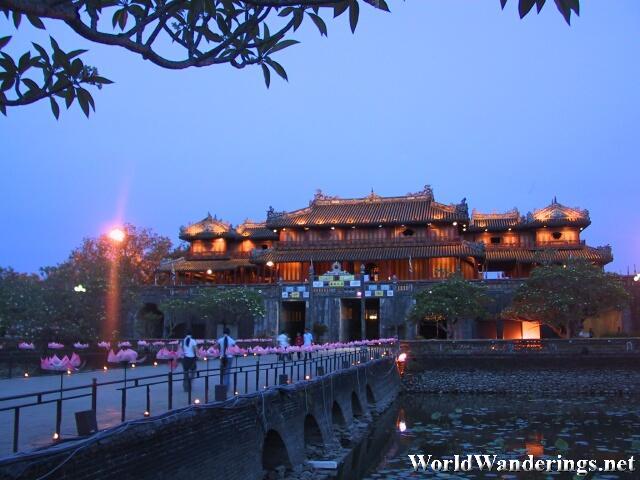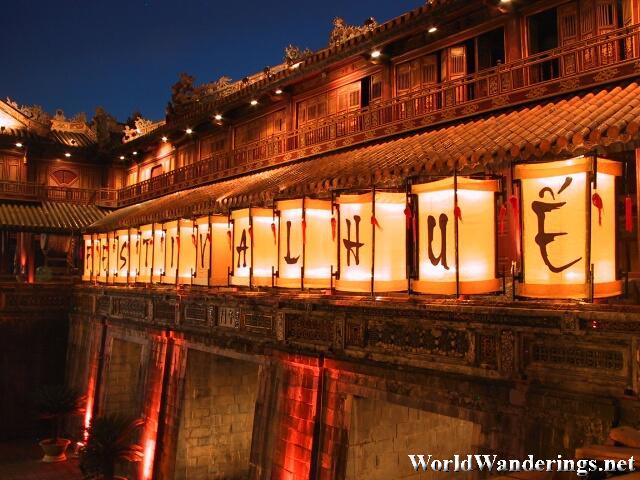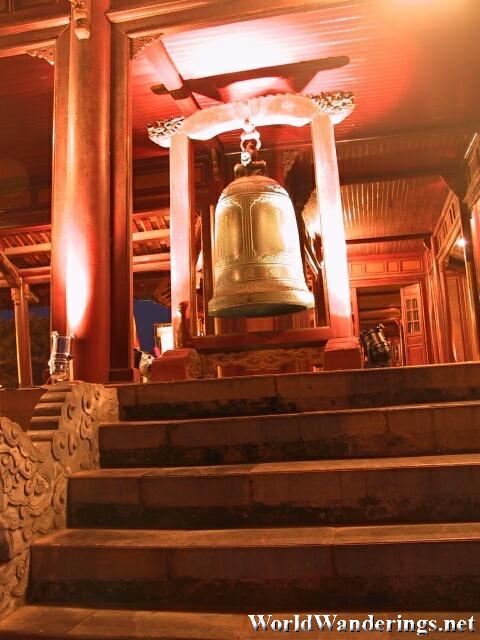We stepped outside the Ngoc Mai Hotel wondering how to get to the Hue’s UNESCO World Heritage sites. Our guides still haven’t arrived yet. Fortunately, there were some locals with motorcycles asking us whether we wanted to go there. Of course we agreed. The ride took around 15 minutes from the hotel to the main square where the temple complex is. There is a lot of activity in the area and a lot of tourists too. But most of the tourists were Vietnamese. There were a handful of Caucasians too but not a lot.
We are currently at the Imperial Citadel Đại Nội, one of the UNESCO World Heritage sites of Hue. This is a palace/temple complex built by the Nguyen Dynasty as recently as two hundred years ago. Actually that was quite surprising, as I wasn’t expecting these temples to be built so recently. Unlike the temples of maybe China whose temples, have existed for a millennia or two. Regardless, the temples of Hue have that unmistakable Chinese feel, signs that China had such a huge influence in the history and culture of Vietnam. If one were to transport the temple to somewhere in China, it would look totally at home.
After paying the entrance fee, we entered the palace grounds. This place used to be the seat of power when Hue was the capital of Vietnam at that time. The Nguyen emperors had these temples built for their use. It was also during this time that Hue because the academic and cultural capital of Vietnam. The palace is surrounded by a moat, still with water, and with a carpet of water lilies covering it. The water lilies made the otherwise boring moat come to life with color.
The Ngọ Môn gate at the entrance was a beautiful sight. It has all the markings of Chinese design complete with Chinese characters. One could actually climb up and walk to it and get a good view of the surrounding area. There are huge drums on top presumably for defense. The central door of the gate and the bridge crossing the moat is reserved exclusively for the emperor.
Further in the complex is the royal palace Thái Hòa itself. As expected it is truly magnificent in its design. Even the columns are exquisitely carved with dragons. Little wonder why Hue became the cultural capital of Vietnam for a while. I found it amazing to see that the palace was so well preserved considering that Vietnam was in civil war just a couple of decades ago. The people have done a great job preserving such as precious treasure. The palace is where the emperors would hold court and receive foreign dignitaries.
Behind the palace is an area full of red lanterns. I was curious as to what the purpose of those lanterns were, when we were informed that these were a actually fireworks for the night’s festival. Actually, there are a couple of buildings in a state disrepair. It seems they were destroyed in the civil war.
There were more and more people coming in the Citadel and were gathering in the open area. In another part of the complex were some performances showing traditional dances. I wasn’t really interested in them we hung around for a while to see if something will happen.
By this time, the sun had already set and the palace was all lit up. The temple now looked even more impressive with the lights turned on. Combine that with the slowly darkening sky and the water of the moat, it really makes for a beautiful scene.
Outside the Citadel, was also another performance area, this is more like a concert more than anything else. Not wanting to lose myself in the huge crowd gathered at the performance area we decided to go back to the hotel.
For you readers, it may be interesting to see how big the complex actually was if you look at the map and zoom back a little bit. Only after seeing the scale of how big the imperial citadel was can one truly admire their skill in building this icon of Hue.
[xmlgm {http://www.worldwanderings.net/kml/Citadel.kmz}]





